The best and most economical way of carrying cargoes is in box containers, if the cargo dimensions allow easy, tight packing of the containers with transit trays for motor vehicle components in a 20' box container.
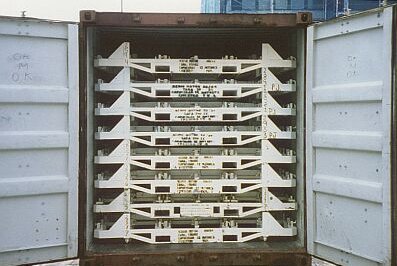 |
|
| Transit trays for motor vehicle components in a 20' box container |
In the stuffing example illustrated, the cargo is slightly narrower than the door opening. The door opening itself virtually matches the internal dimensions of the container . The trays for transporting motor vehicle components therefore fill the container almost completely. Since the trays interconnect, all that is needed for longitudinal securing in the door area is squared lumber or empty pallets.
 |
|
| Securing the container cargo in the door area |
If such cargoes are loaded loosely stacked, gaps in the door area may be braced with wooden lattices, pallets or equivalent materials or simple structures. Any small gaps that may remain against the container side walls can be filled with boards, laths or the like.
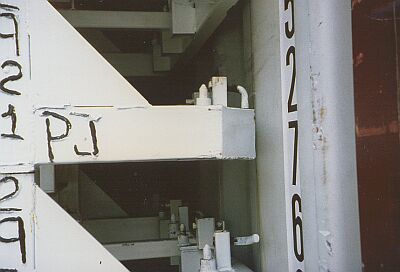 |
|
| Detail of the transit trays in the area of the container side walls |
If package dimensions are not adapted closely enough to container dimensions, deficiencies regularly arise, which lead to cargo losses or greater labor costs and use of materials.
 |
|
| Unfavorable package dimensions can cause packing errors. |
The telescope cartons should have been a few centimeters wider. Other aspects which merit criticism are the strapping with steel straps and the lack of edge protection. The bases of this combined packaging are only suitable for stacking if the tare weights are relatively low or the overstowed cargoes have adequate loading capacities.
 |
|
| Gaps in the cargo may result in damage. |
In transit, the small amount of play between the cargo and the container walls could result in damage to the packaging and possibly also to the contents.
Lateral dunnage consisting of boards or similar materials can reduce possible play during carriage sufficiently to reduce the risk of damage.
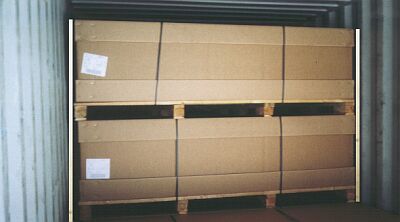 |
|
| Even provisional filling of the gaps reduces the risk of damage. |
However, it is better to use interlayer dunnage to stop packages in the upper tiers from exerting any damaging pressure on cargo below them (1) and to rule out completely any sideways movement by using appropriately securely and firmly fitted materials (2).
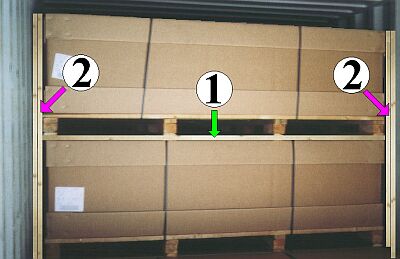 |
|
| Compact stowage by filling all the voids |
The packing example illustrated below is also deficient in certain respects:
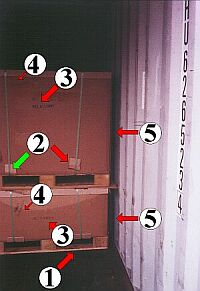 |
Inadequate packing in a 20' box container |
The pallet base used here is certainly an improvement on the previous example with the telescope cartons, since the different arrangement of the boards makes the contact area larger:
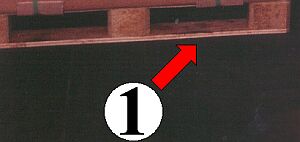 |
|
| Sufficiently wide boards at the base of the pallet increase the contact area. |
Steel straps are unsuitable for strapping cartons. The provisional edge protection is inadequate. It would be better to use wide plastic strapping with appropriate elasticity and sufficiently strong edge protectors:
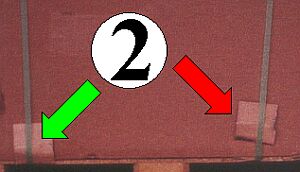 |
|
| Steel strapping and inadequate edge protection constitute a packaging risk. |
The label on the package states that the container is bound for Melbourne. For voyages to Australia and New Zealand, it is essential to comply with regulations on the infestation of lumber by the Sirex wasp.
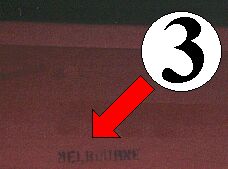 |
The CTU packing guidelines give the following general instructions:
- 3.3.2 If a CTU is destined for a country with wood treatment quarantine regulations, care should be taken that all wood in the unit, packaging and cargo complies with the regulations. It is a useful practice to place a copy of the wood treatment certificate in a conspicuous place inside and, where appropriate, outside the unit in a weatherproof pouch.
Marking often constitutes the only communication between the cargo shipper and the warehouse, packing and handling personnel. Labels on shipping packages should therefore be conspicuous and clear. The small characters used here for the marking "fragile" cannot be deemed adequate. Such markings generally relate to the package contents. The condition of the package gives the impression, however, that it is the packaging that is fragile here.
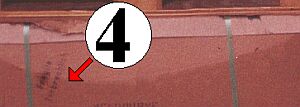 |
|
| Inadequate marking of shipping packages |
Where contents are fragile, clear labeling with an appropriate DIN or ISO symbol, i.e. an upright glass, is absolutely essential:
 |
|
| Symbol indicating fragile package contents |
However, it is clear from the picture that the shipping package has already been bent, because the packaging was too weak, despite the provision of hardboard to distribute pressure and the fact that the package stowed over it was not excessively heavy.
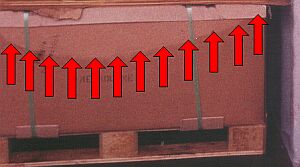 |
|
| Clear indication of weak and thus inadequate packaging |
Although it would theoretically be possible to mark packages as weak using symbols forbidding overstowage, this is not really a practical suggestion as so much stowage space would be lost.
 |
|
| Theoretically possible symbols for "Do not overstow" or "Single-tier loading" |
Packages should also be so constructed that they are able to withstand normal stacking loads in the means of transport used for carriage.
If the intention is to provide goods with particularly high levels of protection, it is best to use tested packaging or to have packaging which has been developed in-house tested by independent institutes.
It is also possible to package normal goods in packaging whose strength or loading capacity is in line with the law on hazardous materials. The Annex to the IMDG Code contains regulations relating to stack pressure testing, which state that test packages which contain goods comparable to the original cargo should be stacked at least 3 m high. At the end of the test period, the packaging must neither lose its cargo nor deform or become unstable.. The minimum test period is generally twenty-four hours, though twenty-eight days is prescribed for certain packages. With the exception of bags, this stack pressure test is prescribed for all types of packaging.
Under no circumstances should gaps be left in the cargo during stowage, as they are the main cause of cargo damage.
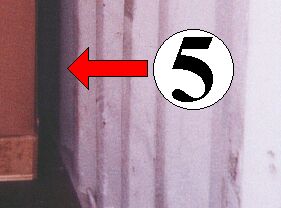 |
|
| Stowage gaps are the main cause of cargo damage. |
The gaps must be filled. It is important to fill gaps with boards, squared lumber, pallets or similar materials using large bearing areas. If sensitive cargoes are being carried, large areas around the goods or packaging must be lined. With relatively heavy cargoes, large areas of lining are also necessary at the container walls. In the example illustrated, there was just room for a particularly thin pallet (6):
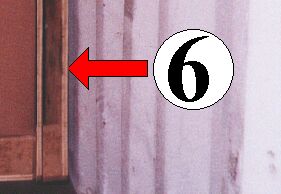 |
|
| Filled gaps virtually guarantee transport without damage |
Airbags are not suitable for such small gaps and load-securing foam is only suitable for rail and road transport due to its low "recovery".